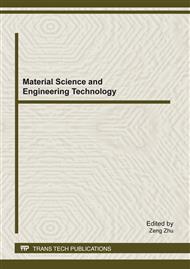p.313
p.318
p.327
p.331
p.336
p.344
p.348
p.353
p.361
A Diversity-Based Algorithm for Energy Detection
Abstract:
Energy detection is the most commonly used algorithm in spectrum sensing. For Unknown signal, the current energy detection has shortcomings on the performance of perceiving the primary users signals in AWGN channel or fading channel. The diversity technology can receive the correlation signals which contain the same information in different branches, then merge and output the signals to reduce the probability of deep fading at the receiving terminal greatly. Therefore, we introduce diversity into the energy detection to improve the ability of detection. Simulation result shows that, it can improve the cognitive ability and obtain diversity gain through reducing the impact of fading. With the increase of diversity numbers, our method obtains lower probability of false alarm detection and performs much better than the traditional energy detection.
Info:
Periodical:
Pages:
336-343
Citation:
Online since:
February 2012
Authors:
Keywords:
Price:
Сopyright:
© 2012 Trans Tech Publications Ltd. All Rights Reserved
Share:
Citation:


